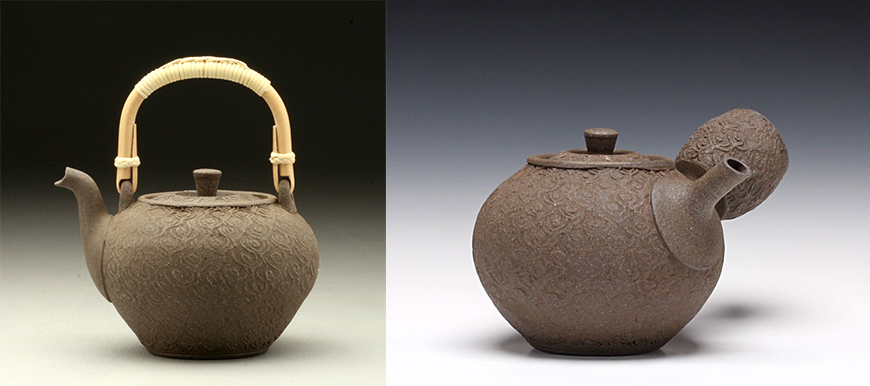Art professor creates world-renowned ceramics
“Lunch,” said Utah State University ceramics professor John Neely, “that’s what inspires me.”
Neely has been at his craft for nearly four decades, honing his talents and abilities through extensive experience that spans the globe. Though internationally recognized for his skill and research, he still finds inspiration within the most practical and useful items.
“The things that are required to eat and drink, that’s what I think about,” Neely said. “I think it’s really interesting to make things to use. I like sculpture, but I’m most interested in making those things that I use myself — things for the table top, things for the kitchen.”
Some of Neely’s most recognized works are his teapots. They are put together like a puzzle, each piece fitting perfectly and every pot functional. Inside the teapots are small, handcrafted filters. Some teapots have handles that arch over the pot itself, while others incorporate a more traditional Japanese style.
The latter are influenced by Neely’s time spent living abroad in Japan, and have the handle located on the side of the pot, which make them easy to grip and pour.
“I’m reminded on a daily basis what it requires to have a good teapot,” Neely said. “I drink tea every morning.”
This habitual use leads him to construct high-quality pots that perform well.
His teapots are “so precise,” said Nick Lammay, a graduate student working on his master’s of fine arts at USU. “He’ll spend days on one thing. His attention to detail and his willingness to sit down and perfect that one thing is pretty amazing.”
Neely’s collection is large and varied.
“Our house is full,” he said. “Bowls, plates, mortar and pestle, salt shakers — they’re all there.”
He said his craft is versatile.
“Just about anything that you can imagine that can be made out of clay, I’ve made,” Neely said.
Counter space within his studio is difficult to find between the bags of clay and artwork lying around. Mugs and bowls line the shelves, and a stack of plates he made as an undergraduate student take up space next to an intricately-crafted teapot.
“They are all in their own way unique,” said studio coordinator Todd Hayes of his colleague’s creations. “Regardless of whether or not it’s a teapot, bowl or a mug, whatever it is he’s making, it’s always John Neely’s. You can always tell that it was his hands that made it.”
From pioneering the “train kiln” in 1989 — something that USU is known for around the world — to his finesse in potting and inspiring students, Neely’s hands have helped to craft USU’s ceramic department into what it is today.
“If it was something trivial, we wouldn’t study it in the university,” Neely said.
According to Neely, his work is more than just a hobby. It is both a research science and a passion.
“The premise is that, in addition to the intrinsic value of the research, active participation in their fields will animate and inform the researchers as educators,” he wrote in an article for the National Council on Education for the Ceramic Arts Journal in 1989.
That philosophy, along with spending a lot of time with students and in the shop still governs his teaching method and career today.
“You just ask him a question, a random question, and you’ll come in and find books stacked on your table,” Lammay said. “He’ll facilitate anything that you want to do regardless of your interest, even if it’s not in his realm.”
Other MFA grad students, such as Suzanne Fluty, have also had similar experiences.
“He’s always looking out for his students,” Fluty said. “He a fantastic professor, and he’s definitely doing his own research, which is inspiring to see.”
Neely started teaching at USU in 1984, making the visual fine arts center his home away from home.
“He gets here at eight and leaves at eight,” Hayes said. “He just kind of putts around all day and gets stuff done. His commitment to the field and the program is incredibly inspiring.”
Neely still enjoys what he does. And more than presenting his work to the world, he would rather sit and go to work on something new.
“It’s not fun to have deadlines and to have the pressure of getting things to galleries or museums and exhibits,” Neely said. “But when I’m actually doing something that is exploratory, experimental, then it’s fun.”
— ariell.allred@aggiemail.usu.edu

